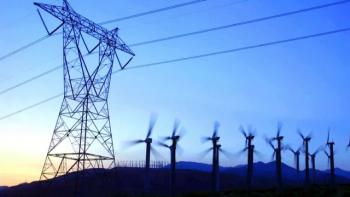
Image Credit
Getty ImagesJuly 9, 2021
By Le Xie, Chanan Singh, Sanjoy K. Mitter, Munther A. Dahleh, and Shmuel S. Oren, opinion contributors
Originally published in The Hill I Original Article
The nation’s electric grid is in the news again following catastrophic power failures in Texas and California during the past year. The bipartisan infrastructure framework was recently endorsed by the Biden administration. The electricity sector has been thought of as the “leading horse” when it comes to decarbonization. How would the grid infrastructure cope with the pressing challenges of decarbonization, reliability and cost-affordability? Could we keep the lights on while keeping our planet healthy?
The answer to these questions largely lies in building a resilient energy “superhighway,” an electric grid that delivers a wide portfolio of energy supplies to the end users in a reliable manner.
Today’s electric grid infrastructure is just not ready for the scale and speed of energy portfolio transformation being envisioned. One could ask the following thought experiment question: How many electric vehicles charging at the same time would have blown up your local substation transformer? If we are thinking of a small town in the Midwest, the answer is probably a few hundred. In order to achieve the climate solution with speed and scale, it is imperative that investments be made to strengthen the electric grid by building both “big wires” and “small wires.”
“Big wires” refer to the bulk transmission grid, as well as the hardware equipment at the high voltage side. “Small wires” refer to closer-to-home distribution grid, as well as the lower voltage control, sensing and communication capabilities. Investments are needed both in building the backbone interconnections, as well as in upgrading the “last mile” distribution grid.
Strengthened backbone interconnections will provide better distribution of energy from sources to load centers and will capitalize on the diversity of resources to reduce the uncertainty of variable energy resources. Upgrading the distribution grid would accommodate the changes in the demand imposed by the EVs and the distributed energy resources at the distribution level. We propose the following actionable innovation priorities to build a more resilient grid infrastructure for climate solutions.
First, reliability has to be of paramount importance for the energy superhighway. Given the massive decarbonized sources of energy and the variability of generation resources, conventional approaches to maintaining reliability would not only be costly, but almost impossible. Substantial efforts (both intellectual and financial) will need to be invested in the theory and practice of large-scale composite systems reliability evaluation and assurance.
Reliability considerations is one of the biggest missing pieces as society aims at making bold climate moves. While energy storage and flexible demand will help along the way, today’s reliability evaluation and metric and the manner of their implementation simply are not scalable in terms of the deepening level of renewable penetration within such short timeframe (10 to 15 years). There is an urgent need to fundamentally research on a composite reliability system that is made of many distributed variable resources.
For example, traditionally reliability considerations have been done separately at the bulk power system and the distribution systems have been more passive recipients of its benefits. But in the new environment a holistic approach considering bulk power and distribution together may provide more economical alternative. This means much more investment on the research and development on the system theory and simulated system tests before we massively scale it up in the real world. Also, time is of essence as some of the physical infrastructures, especially at the big wires level require long lead times to accomplish.
Second, institutional and market design innovations will need to go hand-in-hand with technological innovations to maximally mitigate the operational risks brought by variable and duration-limited energy resources. If properly designed, solutions to the reliability challenges might lie in the new resources themselves. For example, using EV charging as a market for mobile energy storage could go a long way to improve the short-run economic efficiency and reliability of a massively decarbonized power sector.
Third, agencies and entities across this complex ecosystem will need to have more clear roles and responsibilities to align the innovation agenda. We need to couple the market and regulation reform together with the new technologies in order to make the most of an energy superhighway. Given the complex nature of the electricity sector, it would be crucial to define roles and responsibilities of various stakeholders (e.g. Department of Energy, North American Electric Reliability Corporation) so that there is clear alignment of innovation and responsibilities.
Last but not least, there is tremendous need of talents in the overall infrastructure sector. The traditional “brick and mortar” type of workforce for infrastructure will need to be reimaged as one of the most exciting system building workforce that combines the magic of material sciences, data sciences, as well as large-scale socio-economical institutional design.
International cooperation on this matter is of utmost importance since no country alone can develop the energy infrastructure to tackle the global climate challenge. A good example might be a CERN-type scientific enterprise that addresses the interconnectivity of the energy infrastructure as we face climate challenges. We will not dodge from the challenges, we innovate out of it.
Le Xie, Ph.D., is a professor at Texas A&M University and a research affiliate at the MIT Laboratory for Information and Decision Systems.
Chanan Singh, Ph.D., is a professor at Texas A&M University.
Sanjoy Mitter, Ph.D., is a professor at MIT.
Munther Dahleh, Ph.D., is a professor at MIT.
Shmuel Oren, Ph.D., is a professor at the University of California, Berkeley.
Xie, Singh, Mitter, Dahleh and Oren are the authors of “Towards Carbon-neutral Electricity and Mobility: Is the Grid Infrastructure Ready?” Joule (Cell Press), July 2021.


